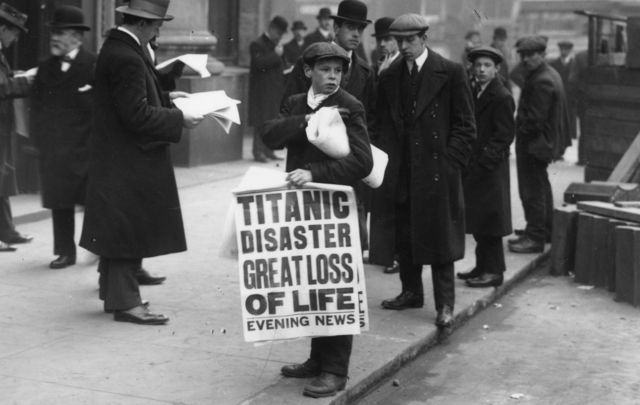Before the RMS Carpathia and its Titanic survivors reached US soil on April 18, 1912, investigations were already being planned to discover what had happened, and what could be done to prevent a recurrence.
People around the world were shocked that the “unsinkable” Titanic was now lying at the bottom of the Atlantic Ocean and the news media were battling to get a grip on what had actually transpired.
White Star Line, first claimed the ship was still floating and being towed into port, then that it had sunk and the survivors were being taken to Halifax, and finally that they were being brought to New York.
Inquiries were held in both the United States and the United Kingdom.
The United States Investigation into the sinking of the Titanic
The U.S. Senate's inquiry into the disaster began on April 19 and was chaired by, Senator William Alden Smith.
Smith needed to subpoena all surviving British passengers and crew while they were still on US soil which prevented them from returning to the UK before the American inquiry was completed on May 25.
Author Daniel Butler notes in Unsinkable: the full story of the Titanic that the British press condemned Smith as an opportunist, insensitively forcing an inquiry as a means of gaining political prestige and seizing "his moment to stand on the world stage".
Smith, however, already had a reputation as a campaigner for safety on U.S. railroads and wanted to investigate any possible malpractices by railroad tycoon J. P. Morgan, Titanic's ultimate owner.
The results of the inquiry noted that a lack of emergency preparations had left Titanic's passengers and crew in "a state of absolute unpreparedness", and the evacuation had been chaotic.
No general alarm was given, no ship's officers were formally assembled and no orderly routine was attempted or organized system of safety begun.
The ship's safety and life-saving equipment had not been properly tested.
Titanic's Captain Edward Smith had shown an "indifference to danger [that] was one of the direct and contributing causes of this unnecessary tragedy."
The lack of lifeboats was blamed on the British Board of Trade, "whose laxity of regulation and hasty inspection the world is largely indebted for this awful tragedy."
White Star Line Chairman Bruce Ismay was found not to have ordered Smith to increase speed, but his presence may have contributed to the captain's decision to do so.
Third-class passengers had not been prevented from reaching the lifeboats but had, in many cases, not realized the ship was sinking until it was too late.

Love Irish history? Share your favorite stories with other history buffs in the IrishCentral History Facebook group.
The United Kingdom’s Investigation into the sinking of the Titanic
The British Board of Trade's inquiry into the disaster was headed by Lord Mersey and took place between May 2 and July 3, 1912.
According to Stephanie Barczewski’s book, “Titanic: A Night Remembered (2006),” because the Board of Trade had previously approved the ship, it was seen by some as having little interest in its own or White Star's conduct being found negligent.
The UK inquiry reached broadly the same conclusions as its US equivalent; that the loss of the said ship was due to collision with an iceberg, brought about by the excessive speed at which the ship was being navigated and not due to any inherent flaws with the ship
It also found that the lookout being kept was inadequate given the navigational hazards Titanic faced, and that the ship's officers had been complacent.
The Board of Trade was criticized for its inadequate regulations, notably the failure to ensure that enough lifeboats were provided and that crews were given proper training in their use
Neither inquiry's findings listed negligence by J.P. Morgan's International Mercantile Marine (IMM) or White Star Line as a factor.
Comparing the two inquiries, Barczewski notes states that the British inquiry was much more technical, "the more learned and erudite of the two", while the American inquiry's report was a reflection of a comparatively poorly managed inquiry that had frequently allowed itself to get sidetracked.
The Role of the SS Californian in assisting the Titanic
The Role of the SS Californian, which had only been a few miles from Titanic but had not picked up its distress calls or responded to signal rockets, came in for sharp criticism.
According to the US inquiry, the SS Californian had been "much nearer [to Titanic] than the captain is willing to admit" and recommended the British Government take "drastic action" against Captain Stanley Lord for his actions.
The UK inquiry concluded that the Californian "could have pushed through the ice to the open water without any serious risk and so have come to the assistance of the Titanic” and may have “saved many if not all of the lives that were lost."[32]
Recommendations
In the aftermath of the Titanic’s sinking, major changes in maritime regulations were implemented to improve safety measures.
More lifeboats were to be provided on ships and lifeboat drills were to be properly carried out.
Wireless equipment on passenger ships was to be manned around the clock.
An International Ice Patrol was set up to monitor the presence of icebergs in the North Atlantic, and maritime safety regulations were harmonized internationally through the International Convention for the Safety of Life at Sea; both measures are still in force today.
* Originally published in 2019, updated in April 2023.




Comments